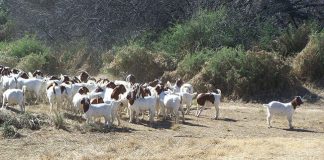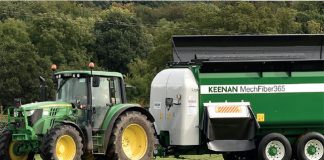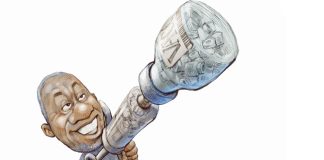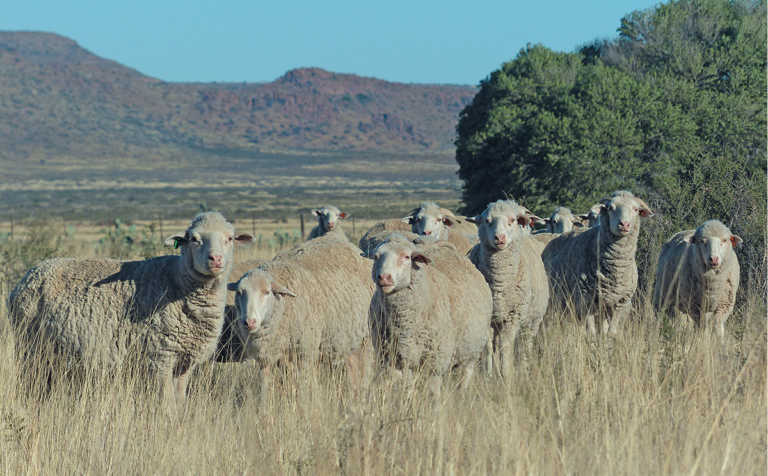
Photo: Mike Burgess
Stefan Erasmus has no doubt where his attention currently lies with his 2 000-strong flock of ewes.
“I love wool, but my focus at the moment is on lamb production,” he says.
Only two years after taking full control of the almost 7 800ha family operation, Stefan (33) was named the Eastern Cape Young Farmer of the Year in 2017, thanks largely to a R2 million lambing shed.
The impressive building, shimmering in the Karoo heat on the farm Beskuitfontein, is equipped with 390 pens of 1,4m x 1,4m, and has revolutionised production in his Merino flock, he says.
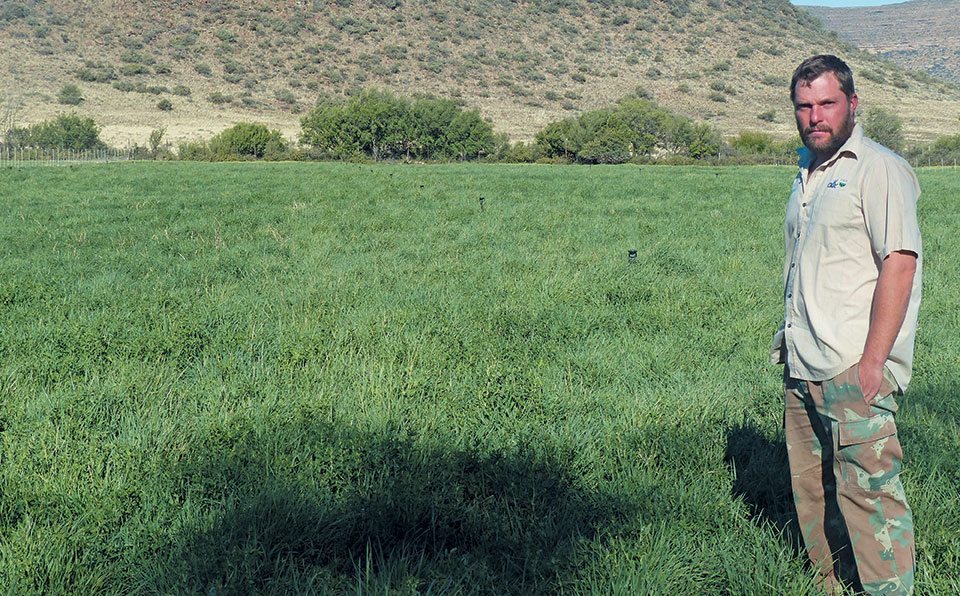
“The reason for building the shed was to neutralise losses and increase control and efficiency in order to boost mutton production,” he explains.
“The flock now generates 25% of its income from wool and 75% from mutton due to the increase in the weaning rate.”
Despite Stefan’s move to an intensive lambing system, the ewes are otherwise farmed extensively.
“A third of our veld is mountainous and needs to be utilised by ewes as I don’t farm hamels anymore,” he says.
“So we’re still an extensive Karoo farm, we just reproduce intensively.”
These extensive demands have, for example, convinced Stefan to allow the ewes to produce in a 12-month cycle. A shorter period would put the animals under too much strain and negatively influence fertility and wool quality (the clip currently averages 19 microns).
Similarly, young ewes are mated for the first time at 13 months to ensure a higher conception rate.
Lambing
The lambing shed is similar to that of Gilly Scheepers of Fouriesburg in the Free State. It is electrified, and has an insulated roof, ventilation tunnels and slatted floors to create as comfortable an environment as possible for the ewes.
The structure is elevated on 2m stilts, enabling dung and urine to fall through the slatted floor. Below, there is enough space between the stilts to admit a small tractor for the collection of manure to produce compost.
The chief advantage of the shed, though, is that it neutralises environmental factors in the production process; these include severe weather (-14°C in winter is not unusual), predators, and the stress that the animals normally undergo when handled outside.
“Ninety percent of losses on the farm occur during the first four to five days after lambing on the veld or pastures,” says Stefan. “Lambing in the shed allows us to cut the losses down to basically zero.”
In addition to minimising losses, an optimal feed ration including lucerne and maize, formulated by Dr Hendrik van Pletzen of Voermol, improves the ability of the ewes to produce and support lambs.
Strengthened with this feed, ewes can cope with the stresses of lambing far more effectively, thereby ensuring quicker recovery. In addition, two well-trained workers can manage lambing ewes efficiently, even at night thanks to the electric lighting, with minimal stress to the animals.
Stefan lambs his ewes in four one-month lambing seasons: February, March, August and November.
Lambing four times a year produces a regular cash flow, allows for better fodder flow planning, and minimises the possible impact of price fluctuations in the value chain.
All ewes are administered pregnant mare serum gonadotropin (PMSG) doses to boost reproductive success. Ewes are also synchronised, allowing them to be brought to the shed from the pastures on a set date to begin lambing.
Every month-long lambing season is defined by four distinct peaks, with younger ewes, which constitute 85% to 90% of the animals, lambing on days 1 and 18. A second cycle of older ewes lamb on days 4 and 21. All second-cycle ewes are involved in a crossbreeding programme with Dormer rams.
Weaning
After lambing, ewes with singles are kept in the shed for three days, ewes with twins for five to seven days, and ewes with triplets for 10 days, before being put onto pasture.
Stefan has 70ha of perennial and non-perennial irrigated pastures, including lucerne and combinations of clover, oats and rye, fescue and cocksfoot grass.
Composted manure helps boost production of the pastures, which play an important role in sustaining the ewes before and after lambing. Lambs are eventually weaned from the pastures at 60 days.
After weaning, ewes return to the veld and lambs are fed for a month in the shed before being marketed below 100 days at a target weight of 30kg. Although Stefan did not initially plan to use his shed for preparing lambs for the feedlot, it has proved highly effective for this purpose.
Because the floor of the shed is elevated, the animals are exposed to fewer parasites. And confined to pens, they burn little energy, enabling them to gain an average of 350g a day on a Voermol-based ration.
It was also a surprise for him to notice how calm the ewes and lambs were in the shed, and how easy handling was.
Stefan cooperates with feedlots and uses a feed ration formulated according to their specifications. This leads to a smoother transition of his lambs into the feedlot environment.
Feedlot growth figures are also made available to Stefan, reflecting a good business relationship and ensuring a premium for his lambs.
“As producers, we should make sure we fit into the value chain better,” he says.
Selection for multiples, weight and milk
No ewe born as a single lamb is ever introduced into the flock as a replacement animal. This strict selection for multiples has been policy on the Erasmus farms since Stefan’s father, Pieter, began farming 45 years ago.
The Australian tag system (soon to be converted to an electronic system) is used to genetically trace all lambs, making selection more precise.
Although fertility is a core priority, sheep are also selected for weaning weight and milk production before wool is considered. “We need growers, not passengers,” Stefan stresses.
The flock is currently ‘closed’, with all flock sires being self-bred.
Despite not having registered a stud, Stefan tests all his rams for performance. A fear for him when starting the intensive lambing system was that it would affect mothering ability, but today he has a different opinion.
“How do you determine if a lamb died because of poor mothering ability or something else if you don’t have control over the lambing process?” he asks.
“If a ewe isn’t performing on a level playing field, as in the shed, then she doesn’t belong on the farm.’’
Email Stefan Erasmus at [email protected], or phone him on 082 446 6908.








